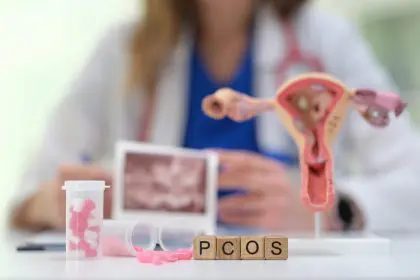Breannie Charles is a certified HIV pharmacist who works for Avita Pharmacy, specializing in HIV care, treatment, and prevention. Charles has been committed to helping patients living with HIV take the proper measures to increase their quality of life while also helping others who want to prevent getting HIV.
Charles spoke with rolling out about HIV within the Black community, treatments, and the false stigmas surrounding HIV.
[Editor’s note: This is an extended transcription. Some errors may occur.]
What led you to this field?
I graduated pharmacy school from Xavier University of Louisiana in 2013, and during my time there, I’ve always loved infectious diseases. I’ve also loved working in ambulatory care disease states where you can have more patient interaction. I love how I can combine that with working with HIV and hepatitis. I just love the science behind it, learning about the disease state itself, how it works, how the drugs work to help treat it, and the advances that we have made over the years since it was first discovered back in the early 80s. I started practicing in those areas during my residency training at Orlando VA Medical Center, and then at Kaiser Permanente in Atlanta, Georgia. I was there for about a year, and then after that, I came back to my home state of Louisiana. I was born and raised in Louisiana and work for Avita Pharmacy, which specializes in HIV care, treatment, and prevention. I’ve always loved being able to help that patient population, being around the improvements that have been seen over the years, going from multiple treatments, multiple times a day, to a single tablet regimen with minor side effects to now long-acting injectables that can help increase patients’ quality of life.
What should people know about HIV and AIDS in the Black community?
One of the first things is to recognize that there are two different things: HIV and AIDS. HIV is the actual virus that can lead to AIDS. If you are diagnosed with HIV, it does not mean that you have AIDS. AIDS is a latent phase, so there are three different phases from the time of exposure. You have your early phase where patients may have symptoms of the infection, usually, sometimes within two weeks after exposure. You may notice symptoms kind of related to other infections. You may have a fever, chills, or rash, things of that nature. It may happen for the first two weeks, and then typically goes away. After that, the HIV virus just kind of lies dormant in your body for a very long time, attacking your immune cells, which we call our T-cells. Over time, as it is attacking the body, your immune system starts to be affected; it’s not working as well, and then if it’s not treated, it can go into that AIDS phase where your immune system is so low that infections that it typically can fight off, it cannot fight off anymore. Then you start getting those infections that we see that typically lead to death in those patients.
What I want to bring to note here is that usually, the time of exposure of HIV to the time of AIDS is about an eight to 10-year process. We try to focus on screening and prevention. Screening is huge because if we’re screening people who have risk factors for HIV, then we can likely catch you before eight to 10 years go on, and you get into the AIDS space. If you may have had unprotected sex with someone who has had an infection or is infected with HIV or AIDS, if you’re a sex worker, if you have engaged in drug use, all those things are typically things that can lead to HIV infection. Make sure that you are getting your regular screenings done; if you do have those risk factors, screening is typically recommended, at least yearly. For anyone, regardless of your risk factors, a one-time screening is recommended between the ages of about 18 to 64.
When someone does get that diagnosis, what should be their next steps in the process?
Let’s say you did an at-home test, and the at-home test seems to be positive, then you always want to follow up with a healthcare provider, and then go from there. If you test positive at a provider’s office, then they will follow up with the next steps with you, and that’s usually more tests that need to be done as far as looking at your liver and your kidney functions, to make sure that you can tolerate certain treatments that we have, making sure that you don’t have any certain mutations to your virus, we’d look to see do you have any other infections that typically are that can show up sometimes with HIV as well. In this day and age, we have what’s called rapid treatment. Rapid treatment is when you get a patient diagnosed, we sometimes can start you on treatment that day, and still get your other blood tests done, and when your blood tests come back, make sure that you’re still a candidate for that treatment. For someone who tested positive at a provider’s office, there are not many steps that they need to do on their end because they’ll already be at the provider’s office, and they will guide them. Most importantly, the patient needs to make sure that they follow up and do what needs to be done. That’s where we typically have that fall-off. We don’t have patients that follow up, or they get lost out of care.
What should people know about PrEP and PEP?
PrEP and PEP are two different types of treatments for prevention and for patients who do not have HIV. PrEP stands for pre-exposure prophylaxis. If you’re someone who has those risk factors that I talked about earlier for acquiring HIV infection, then it will be best for you to take medication that can help prevent you from getting HIV infection if there were to be an exposure. This is amazing science because we’re using treatment as prevention. We’re being proactive versus reactive, and PrEP has been out since about 2011. A lot of the data is on men who have sex with men, but there are treatments out there for cisgender women. …We have oral (or by mouth) treatments, and then we have injectable treatment, which is the latest treatment for PrEP.
Then you have PEP, post-exposure prophylaxis. This is once you’ve been exposed, and you’re not receiving any type of treatment for prevention. There’s a small window time where we can give you medications to take after exposure to potentially help you from becoming infected with HIV. Typically, we have to get those medications to a patient within 72 hours after exposure to have the best chance of that patient not having an HIV infection. The patients take those medications for 28 days and then after that, they’ll do tests to see if they remain HIV-negative, or if they have acquired HIV.
Why do you think HIV/AIDS has become such a stigma within the Black community?
With the data right now, Black men, Black MSM – men who have sex with men – we are seeing the most new HIV diagnoses still in that community. Black people overall, we’re still seeing more, or the highest number of new HIV diagnoses, which is very sad because we have really great treatment for PrEP and for PEP to help prevent HIV infection. So what’s going on? Why is it that we’re still having these high rates? It’s a combination of multiple things. One is education. So knowing about PrEP and knowing about PEP, having and knowing about HIV overall, and where we are today as far as the treatment goes [could help].
It’s not the death sentence it was when it first came out, just like with COVID. With COVID, when it came out four years ago, we didn’t know much about it. We didn’t have a lot of treatments for it, so our mortality and morbidity, or the rate of death or rate of sickness and illness was very high because we were learning about this. The same thing with HIV when we learned about it first in the ’80s, but now we are decades out, and we have patients that are living into older age and geriatric age. A lot of our patient populations are in their 60s and 70s, [people] who were first diagnosed years ago. So what does that mean? Our treatments are working, we’re making great advances, and people are living long and healthy lives with HIV. I think we need to understand the education behind it, knowing what it is, and knowing that even if you have this diagnosis, it’s okay to talk about it. It shouldn’t be a stereotype; it’s a chronic illness, and people are doing well with it and understanding how it’s transmitted.
How should someone living with HIV/AIDS have that conversation with their loved ones?
That’s something that can be difficult to navigate, especially if you’re in the dating scene in the dating world. Just having a simple, honest conversation. “This is my status. I’ve been diagnosed with this.” If you’re receiving treatment, let your partner know where you are in your treatment, and if you’re undetectable or not. There’s a campaign out there called U=U, and it’s undetectable equals untransmittable. We have noticed over the years that data tells us that undetectable patients have less than a 1% chance of transmitting it over. That’s important, and that’s a good discussion to have with a partner because what does that mean as far as engaging in sexual intercourse with your partner? If the partner who is HIV positive is undetectable, then there’s a very low risk of transmitting, but the partner who is HIV negative, they may want to further protect themselves, and there are options such as PrEP. Also, if that partner is thinking about conceiving, conceiving is still an option; we just make sure that the partner who is HIV negative is on PrEP, and especially if it’s the woman, we want to make sure that she’s on PrEP and make sure that she doesn’t acquire HIV while they are trying to conceive.

















